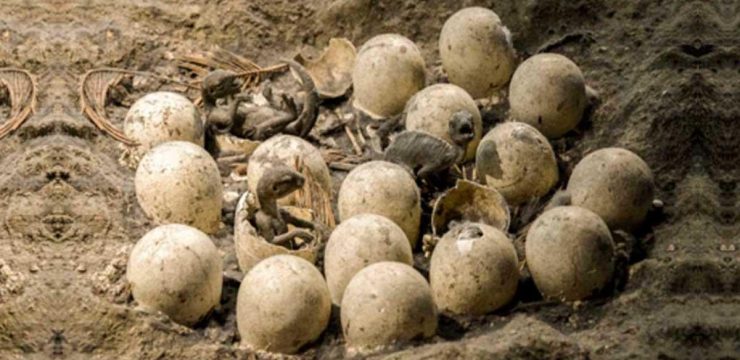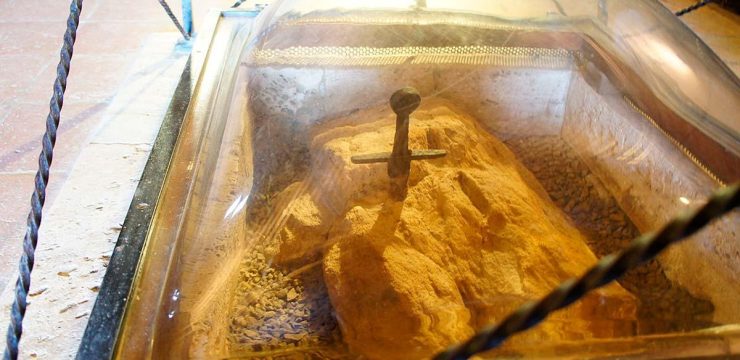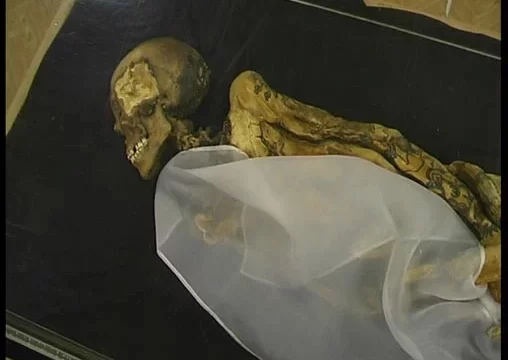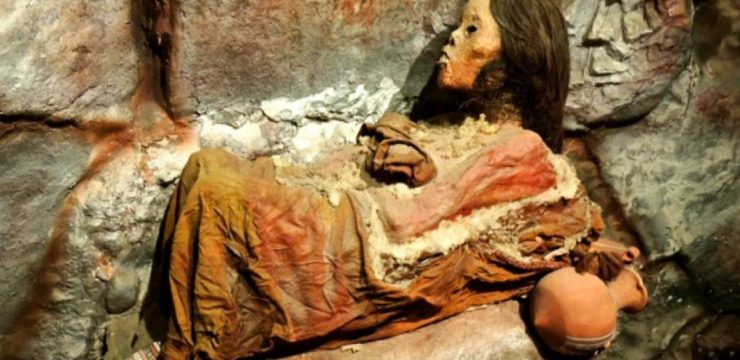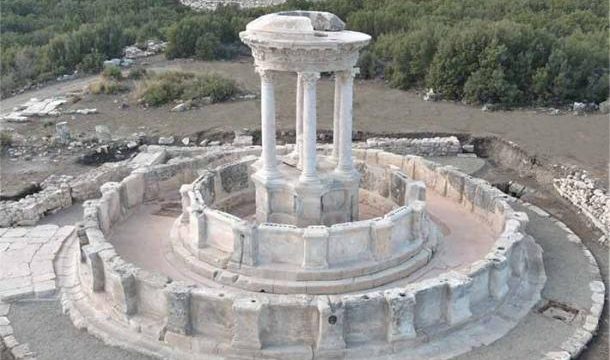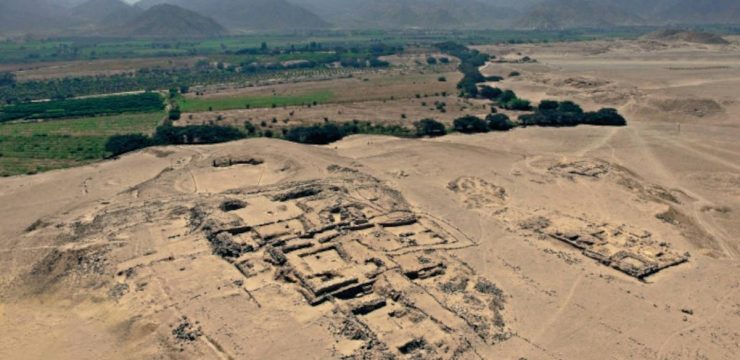In 1902, an extraordinary archaeological discovery was made in Monteleone di Spoleto, a small town near Spoleto in the Umbria region of Italy. A shepherd named Isidoro Vannozzi, while engaged in the construction of a farmhouse, unearthed what would become one of the most significant finds in Etruscan history. Buried beneath the earth within an ancient tomb, he discovered the Monteleone Chariot—an exceptionally well-preserved ceremonial chariot dating back to the 6th century BCE. Alongside this chariot were numerous artifacts, including finely crafted bronze, ceramic, and iron utensils, as well as an assortment of grave goods that provided invaluable insight into the culture and burial practices of the ancient Etruscans.

The Monteleone Chariot was not an ordinary means of transportation; it was a masterpiece of artistry and engineering, intended for ceremonial or religious purposes rather than practical use. Its craftsmanship, decoration, and historical context offered a window into the life and beliefs of the Etruscan civilization, which flourished in Italy before the rise of Rome. However, the journey of this remarkable artifact from its discovery to its eventual home in a museum thousands of miles away was fraught with intrigue and controversy.
The Chariot’s Journey: From an Etruscan Tomb to the Metropolitan Museum
After its discovery, the Monteleone Chariot changed hands multiple times before finding its way to the United States. Initially, Isidoro Vannozzi, unaware of its immense historical value, sold the chariot to a local scrap dealer named Benedetto Petrangeli. For some time, the artifact remained hidden in Vannozzi’s barn, concealed from authorities and potential buyers. It was then exchanged with two Frenchmen in return for two cows—a transaction that, in hindsight, represented a vastly undervalued trade given the chariot’s true significance.
Over the following months, the chariot passed through several owners until it eventually caught the attention of J.P. Morgan, the influential American financier and art collector. Morgan, recognizing the artistic and historical importance of the piece, acquired the chariot in Paris and donated it to the Metropolitan Museum of Art in New York in 1903. Once it arrived at the museum, the chariot underwent extensive restoration efforts aimed at preserving its structural integrity and artistic splendor. The Monteleone Chariot, once buried for centuries in an Etruscan tomb, was now on display in one of the world’s most prestigious museums, where it would captivate scholars and visitors alike.
A Masterpiece of Etruscan Art and Mythology
The Monteleone Chariot stands as one of the finest examples of Etruscan metalwork, distinguished by its elaborate bronze embellishments and exceptional craftsmanship. The structure of the chariot consists of a wooden framework, with two wheels and a horseshoe-shaped body, all adorned with bronze plating. However, what truly sets this artifact apart are the three intricately designed bronze panels that embellish its sides. These panels are not merely decorative but serve as a storytelling medium, depicting scenes from the life of Achilles, the legendary Greek hero of the Trojan War.
The central panel portrays a pivotal moment from Greek mythology—Thetis, the mother of Achilles, presenting him with a divine suit of armor, including a helmet and shield, which were forged by the god Hephaestus. This moment signifies Achilles’ transformation into an unstoppable warrior, a theme that resonated deeply with the Etruscans, who admired Greek mythology and frequently incorporated its themes into their artwork.
The left panel captures a dramatic battle scene, believed to depict Achilles in combat with the Trojan hero Memnon. The depiction of these warriors locked in fierce battle underscores the chariot’s association with heroism and valor. On the right panel, Achilles is shown in his moment of ascension—his apotheosis—where he is taken to the afterlife in a magnificent chariot pulled by winged horses. These panels not only highlight the technical skill of Etruscan artisans but also emphasize the cultural exchange between the Etruscans and the Greeks, as the former often adopted and reinterpreted Greek myths in their artistic expressions.
The Etruscan Craftsmanship and Purpose
Beyond its mythological narrative, the Monteleone Chariot is an exceptional representation of Etruscan craftsmanship. The detailed bronze work extends beyond the central panels, with additional embellishments featuring animals and mythical creatures intricately carved into the framework. The use of these motifs was not purely decorative; they held symbolic significance, possibly representing protection, divine favor, or the power of the individual who once owned the chariot.
Unlike chariots used in battle, this ceremonial vehicle was likely reserved for important public events such as religious ceremonies, parades, or funerary rites. Given its opulence, it is reasonable to assume that the chariot belonged to a member of the Etruscan elite, perhaps a noble or a high-ranking warrior who was honored with an elaborate burial.
The Enigmatic Folkton Drums: A Neolithic Mystery
While the Monteleone Chariot is a remarkable artifact from the Etruscan civilization, another equally fascinating yet distinct discovery sheds light on an earlier period of human history. The Folkton Drums, unearthed in Britain, are three decorated cylindrical objects dating back to the Neolithic era. These intricately carved artifacts were found in a child’s grave, raising questions about their purpose and significance in ancient society.
The Folkton Drums are considered some of the finest examples of prehistoric art from the British Isles. Unlike musical drums, these objects do not show signs of practical use for sound production, leading experts to speculate that they held ceremonial or symbolic importance. Their precise function remains a mystery, though some researchers believe they may have been used in rituals related to burial practices or as measuring tools for early architecture.
Remarkably, the Folkton Drums are among the best-preserved artifacts from Neolithic Britain, allowing modern scholars to study their artistic motifs and hypothesize their role in prehistoric society. In the mid-20th century, a full-sized replica was created to facilitate research and public appreciation, and today, this replica is displayed in Monteleone, providing visitors with the opportunity to witness the beauty of these enigmatic objects.
Conclusion
The Monteleone Chariot and the Folkton Drums, despite originating from different cultures and time periods, share a common thread—they both offer profound insights into the artistic expression, ceremonial practices, and belief systems of ancient civilizations. The Monteleone Chariot, with its exquisite metalwork and mythological depictions, stands as a testament to the sophistication of Etruscan craftsmanship and their admiration for Greek heroism. Meanwhile, the Folkton Drums remind us of the enigmatic and complex nature of prehistoric societies, where even the smallest objects held significant cultural value.
Both discoveries continue to intrigue historians, archaeologists, and museum visitors, serving as reminders that the past, though buried beneath layers of earth and time, still speaks to us through the artifacts left behind. These objects bridge the gap between ancient and modern worlds, allowing us to connect with civilizations long gone but never forgotten.
